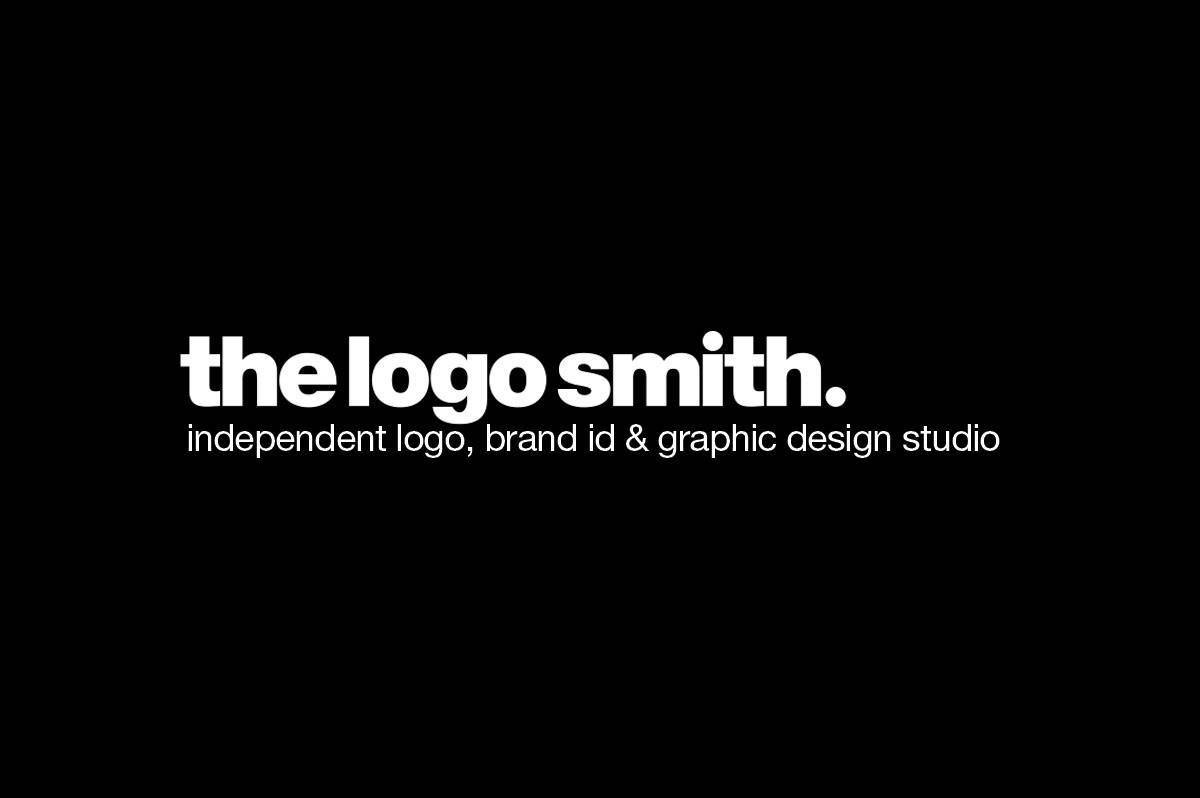Example of a clean, easy to read logo design in one colour.
A straightforward, fuss free list of nine very logo design tips. These will help you keep on the straight and narrow when looking to design and develop logo projects.
Some general advice would be to temper your enthusiasm to impress this new client at all costs. Doing so usually results in a logo that is hard or practically impossible to reproduce or edit. Or you just end up getting some knickers in a real twist.
Try to refrain from measuring your logo designs against the many ‘exceptional’ logo designs submitted to the many galleries on the web. Some of these logos are conceptual, based around made up names, themes and subjects. The ingredients are specifically crafted to create the ‘perfect’ blend of company name and icon.
For the most part, the typical logo project is not like this. These sites are great for inspiration, for admiring the many talented logo designers out there. If you find yourself struggling to come up with a cool unique logo for the local waste disposal company who’s name has at least 8 words in it, then you are surely not alone.
9 Logo Design Tips for Beginners
- A logo should be flexible and usable on pretty much any medium. It should ideally work just as well on a small object such as a golf ball as it would do much larger, from commercially printed posters upwards. You cannot always monitor how or where a client will eventually end up using your logo, so make sure they have a fighting chance by designing it with this flexibility in mind.
- Fonts for me are the life and soul of the logo. They are the structure, the framework. Time spent looking at font options cannot be underestimated. Take your time to ensure you have a font that speaks the right message. The wrong font can be disastrous for the logo, the right font will hold the logo firmly in the spotlight.
- Gradients look neat and can work if you really know what you are doing and are aware of the complications and limitations of commercial printing. If you are not so experienced then its really best to avoid using any gradients whatsoever. The client may like to see such pretty patterns, but when reduced to tiny proportions, they simply fall apart.
- When designing your basic logo idea, start simply. Create it in solid black. Then when you have the basic structure and feel, you can then move onto adding other details such as colour etc. This will allow you to present to your client a number of logo versions ranging from full colour, single colour, monochrome black on white and vice versa. Look at my logo design for KeyBoard Kahuna for this idea in practice.
- Clip art can be a time saver but it’s usually the mark of a low budget or time strapped logo project. Avoid using clip art where absolutely necessary. Use if for inspiration for sure, but if you use some stock art, then you can be sure that it probably exists elsewhere. And this logo project of yours is not so unique anymore.
- Design the logo in vector format, unless its for a web only logo. Using applications such as Illustrator from the outset will save you endless headaches further down the road. Editing a vector logo is far easier than having to edit a pixalised image. It allows you to scale the logo to any size without lose of quality, not so of bitmapped images. Using vector will also mean the printers will not curse you.
- Refrain from designing a logo around the tag line or vice versa. Tag lines have a habit of changing as companies evolve. Allow your design to take this into account. If the client is 100% certain that their tag line will never change, then take their lead. But ensure you warn them of the possible pitfalls.
- Avoid using photography as the main element in the logo, or any element for that matter. Unless you working to specific guidelines set down by the client. Even then, it is your duty to warn them. Photography based logos are supremely hard to reproduce on many forms of media and will adversely affect the flexibility and adaptability of the logo.
- Familiarize yourself with the commercial printing process. This is the downfall of many budding logo designers who have not had any formal print background. Designing a logo for the web is so very different for designing a logo for print. If you take on a job that means the logo will be used on a variety of media, ensure you are fully prepped. Otherwise you may find yourself in deep deep water.
